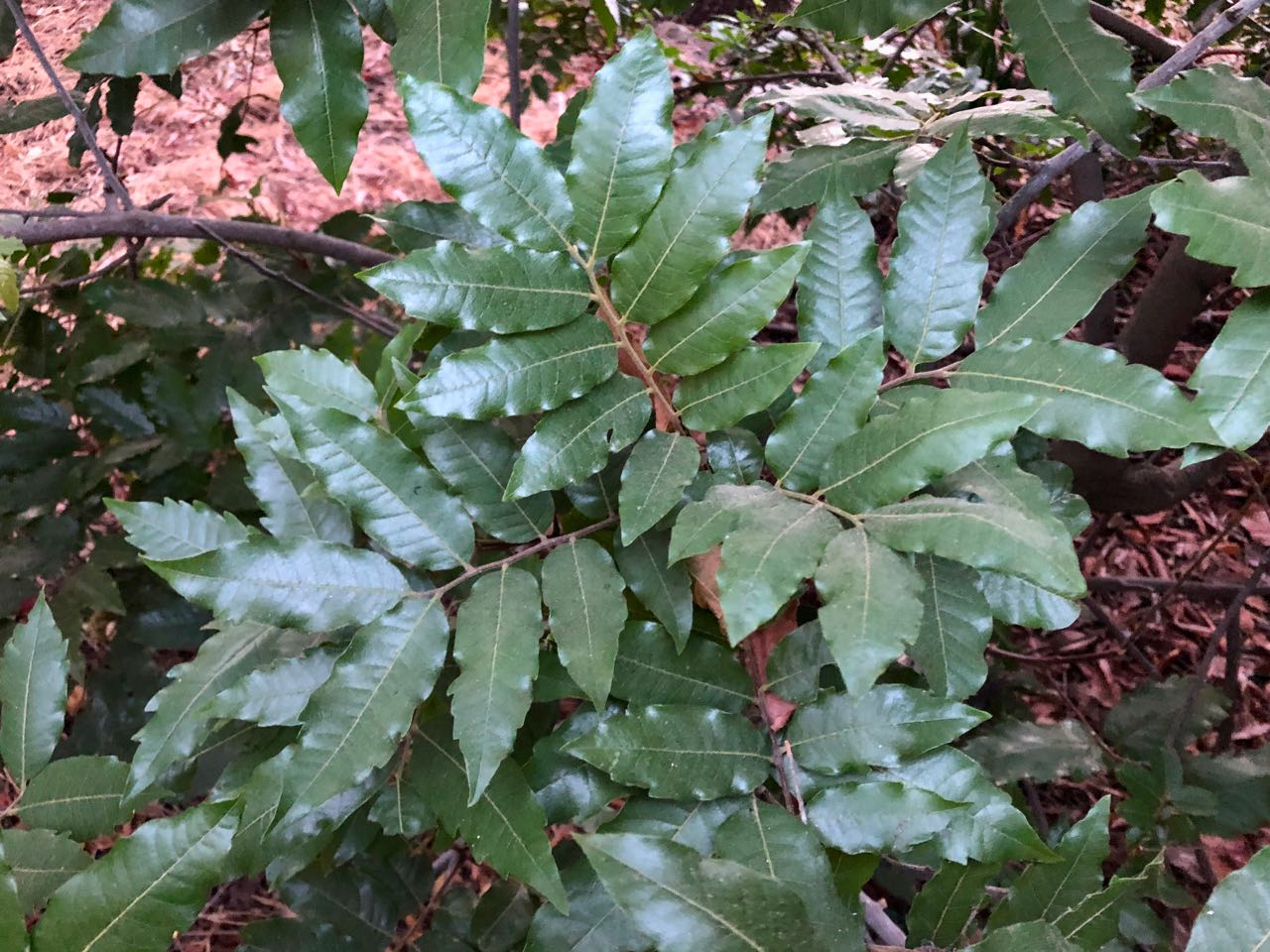Alectryon excelsus
 titoki
titoki
The name is pronounced TEA-Tokey. Not a common tree around here; for many years there was only one on campus, said to have been brought here by Dr. David Starr Jordan in 1893. When Campus Drive was created, it found itself in the dividing strip opposite his house (Serra House, which was later moved to Salvatierra Walk, and still later renamed Attneave House). The tree was subsequently removed.
The pinnate leaves are about a foot long; the leaflets may have coarse saw teeth, or no teeth at all, on the same tree. Like those of ginkgo and eucalyptus trees, the flowers have no petals but depend instead on a show of rusty wool. Strange fruits resembling raspberries appear, from which protrude, but only halfway, hard, shiny, black seeds the size of a cherry stone and quite spherical.
The Greek word Alectryon means rooster, that which gets you out of bed (lektron).
There is a descendant raised from a seed from Jordan’s tree in the Stanford Avenue greenbelt opposite the intersection with Peter Coutts Road, near the back fence of 836 Santa Fe Avenue. A small specimen, planted in 2007, is above the back court of Margaret Jacks Hall. Other examples of titoki can be seen in San Francisco’s Golden Gate Park.
A specimen at the east entrance of Durand was lost in the mid-2000s, as have trees at the southwest corner of Frost Amphitheater (planted in 2007) and the north side of the Faculty Club (planted 2008).
Name derivation: Alectryon – the Greek word Alectryon means rooster, that which gets you out of bed (lektron); excelsus – tall.
About this Entry: The main text of this entry is from the book Trees of Stanford and Environs, by Ronald Bracewell, published 2005. John Rawlings added note on newer plantings and the Durand location ca. 2008. All locations updated (Jul 2024, SP).





